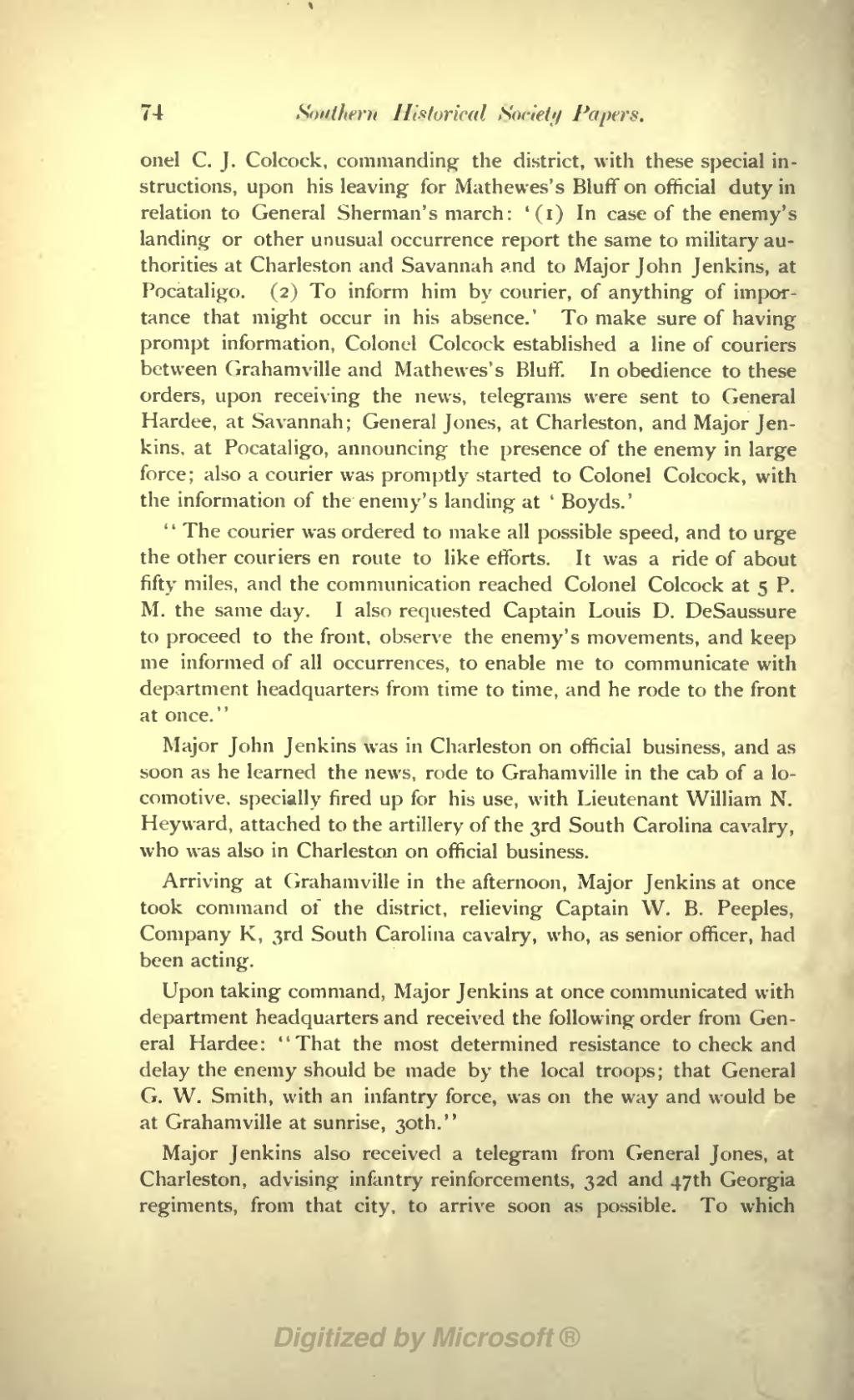74 Southern Historical Xor/Wy
onel C. J. Colcock, commanding the district, with these special in- structions, upon his leaving for Mathewes's Bluff on official duty in relation to General Sherman's march: l (i) In case of the enemy's landing or other unusual occurrence report the same to military au- thorities at Charleston and Savannah and to Major John Jenkins, at Pocataligo. (2) To inform him by courier, of anything of impor- tance that might occur in his absence.' To make sure of having prompt information, Colonel Colcock established a line of couriers between Graham ville and Mathewes's Bluff. In obedience to these orders, upon receiving the news, telegrams were sent to General Hardee, at Savannah; General Jones, at Charleston, and Major Jen- kins, at Pocataligo, announcing the presence of the enemy in large force; also a courier was promptly started to Colonel Colcock, with the information of the enemy's landing at ' Boyds.'
" The courier was ordered to make all possible speed, and to urge the other couriers en route to like efforts. It was a ride of about fifty miles, and the communication reached Colonel Colcock at 5 P. M. the same day. I also requested Captain Louis D. DeSaussure to proceed to the front, observe the enemy's movements, and keep me informed of all occurrences, to enable me to communicate with department headquarters from time to time, and he rode to the front at once."
Major John Jenkins was in Charleston on official business, and as soon as he learned the news, rode to Grahamville in the cab of a lo- comotive, specially fired up for his use, with Lieutenant William N. Heyward, attached to the artillery of the 3rd South Carolina cavalry, who was also in Charleston on official business.
Arriving at Grahamville in the afternoon, Major Jenkins at once took command of the district, relieving Captain W. B. Peeples, Company K, 3rd South Carolina cavalry, who, as senior officer, had been acting.
Upon taking command, Major Jenkins at once communicated with department headquarters and received the following order from Gen- eral Hardee: "That the most determined resistance to check and delay the enemy should be made by the local troops; that General G. W. Smith, with an infantry force, was on the way and would be at Grahamville at sunrise, 3Oth."
Major Jenkins also received a telegram from General Jones, at Charleston, advising infantry reinforcements, 32d and 4yth Georgia regiments, from that city, to arrive soon as possible. To which
